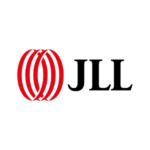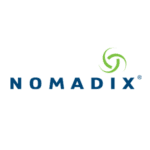 They say the only thing that is constant is change itself. This much is certainly true of the Asia Pacific (APAC) hotel sector which over recent years has had to rapidly evolve to meet changing guest booking behaviors and address the challenge of new competitors entering the market.
They say the only thing that is constant is change itself. This much is certainly true of the Asia Pacific (APAC) hotel sector which over recent years has had to rapidly evolve to meet changing guest booking behaviors and address the challenge of new competitors entering the market.
There has been significant investment into the APAC hotel sector, with construction at an all-time high. According to a recent report from Lodging Econometrics, there are 1,793 hotel projects with 393,732 total rooms currently being constructed in the APAC region. As this new supply comes onto the market, there is the potential for significant disruption at existing properties. How should hotels across the region prepare for these new competitors and future-proof their business? Here are six questions every hotelier should ask themselves when new competitors come to town.
Should I reduce rates to maintain occupancy levels?
When faced with new competition, the worst thing a hotel can do is offer short-term discounts to gain a competitive edge. These discounts often result in a hotel being forced to accommodate for the price reduction by reducing services that differentiate its property from new competing properties.
If a hotelier is unable to convince customers their product is worth more than a new competitor based on ‘soft’ factors beyond price (assuming location is equivalent), then they’ve become a commodity. Price then replaces brand, service standards and physical property as the key driver of purchase decisions. To fight the commoditisation brought about by an excessive focus on price, hotels must maintain unparalleled service levels with a strong brand focus. Every guest—new or loyal—who walks through the door needs to understand what makes that property and brand different and unique in the market.
How should I position myself in the market?
To effectively establish your hotel’s competitive difference, a thorough strength, weakness, opportunity and threat (SWOT) analysis of the new competitor by market segment should be undertaken. Although this seems basic, this process if often overlooked or cursory in its execution. Truly understanding where your opportunity lies in conveying greater value is a far stronger tool in revenue management than knowing what price your competitor is selling at. Established properties also have a fleeting competitive advantage in the number of reviews compared with a new hotel, so leverage these front and centre while you have that advantage.
It is also vital that hoteliers faced with new competition gain an in-depth understanding of their business mix to deliver value to their target market segments. By understanding their business mix and the associated drivers of each mix, hoteliers can analyse customer behaviour such as booking pace, length-of-stay and room-type preference so their sales and marketing strategy can be focused to promote value to different target markets.
What should my channel strategy be?
Hoteliers facing a downturn in business resulting from new competitors gaining or indeed buying market share should revisit their channel distribution strategy and analyse their costs of distribution. While encouraging guests to book direct can help hotels bypass some commissions and fees (even direct channels are not without their challenges), there are still many hotels that rely on the distribution and marketing reach of online travel agencies (OTAs) to secure bookings.
Understanding your costs by channel can help hoteliers negotiate better contracts with third-party channels, gaining flexibility in managing rate and availability parity. Referencing data to understand the impact of acquisition costs on profitability and to support adjusting contracts with OTAs is key. This builds a basis for more profitable and data-driven decisions in the short-term and more long-term channel-value-centric decisions.
How will these new competitors impact my corporate rates?
Contracted rates have always played an important role in a hotel’s bottom line, and how those rates are set can change when faced with an influx of new competition into the market. Any downturn in business resulting from new properties opening can result in pressure from contracted distribution partners (such as wholesalers) after better deals on their contracts. For example, a wholesaler might ask for more access to a hotel’s inventory, push for increased value adds, decrease materialisation commitments or allotment release periods.
Under such a scenario, hotels may consider awarding additional incentives by room type rather than at the hotel level. It is not just the price on the contract, but the terms of the contract, that are also important. Hotels should ensure their distributor contracts allow for re-evaluation of the price and contract terms at regular intervals throughout the contract term based on usage, as well as materialisation.
Should I consider a property renovation?
In general, hotel renovations should be considered when a property needs to be upgraded in order to maintain its revenues and defend its fair market share and revenue generation index. A key indicator it is time to put renovation investment on the table is when the asset experiences a sustained drop in room occupancy unrelated to any price rises or other factors the hotel could have manufactured that resulted in such an occurrence.
One of the biggest choices a hotelier must make relating to a renovation is whether to partially shutdown the property, stagger building works and trade-through, or to undertake a full closure. A hotel’s online reputation will be impacted both during renovations (think complaints from guests about noise or availability of rooms) and post renovations (guests may or may not like the new rooms or could potentially stage a reputation revolt if they get an unrenovated room). It is vital, therefore, for pricing to reflect how guests currently perceive the property, how this compares to the competitor set, how a partial shutdown (and subsequent building works) will impact a guest’s stay and what is the desired reputation for the hotel after the property is reopened.
What can I learn from other markets that have gone through oversupply issues?
While it can be argued the high volume of hotel construction across the APAC region is a sign the industry is in overall good health, given the property development pipeline can be reflective of sustained periods of high demand, some markets in Asia are not always as fortunate. Take Bali, for example, where oversupply was such an issue in 2016 that the Indonesian Tourism Industry Association (GIPI) Bali chapter chairman, Ida Bagus Ngurah Wijaya commented, “We are facing an oversupply of accommodation in Bali. The government should take real action as the oversupply is also causing a price war, with customers being offered inexpensive hotel rates. If the government has no policy, Bali will become a cheap holiday destination.”
Indeed, Bali’s occupancy woes and the influx of Airbnb-style product has resulted in a continued softening of the market, price wars and change in the guest mix on property. Although many resorts think a full hotel is a profitable hotel—citing the on-property spend as compensation to the cheaper room rate—in reality, guests paying significantly less do not tend to spend at the bar or spa, instead drinking externally purchased alcohol and frequenting the many local restaurants and spas.
The different demographic of price sensitive guests additionally impacts those guests seeking a higher end experience—leading to poor guest ratings and reviews. The race to the bottom through heavy discounting is a risky strategy with negative, broad-reaching implications. Maintaining price and brand integrity and adding value rather than discounting continues to be a more prudent long-term approach that shields brand position and guest experience.
Address short-term challenges, but plan for long-term success
In an evolving market, an effective pricing strategy that makes the most of advanced hotel operational technologies is a way that revenue managers can maximise profits, especially when faced with demand challenges associated with new competitors. Having the right information to make decisions is key, as well as continually monitoring impacts caused by changes in strategy. While it is important to take competitors into consideration, when looking to maximise revenue, it is also important the hotel has a long-term plan in place to secure its successful future.
































